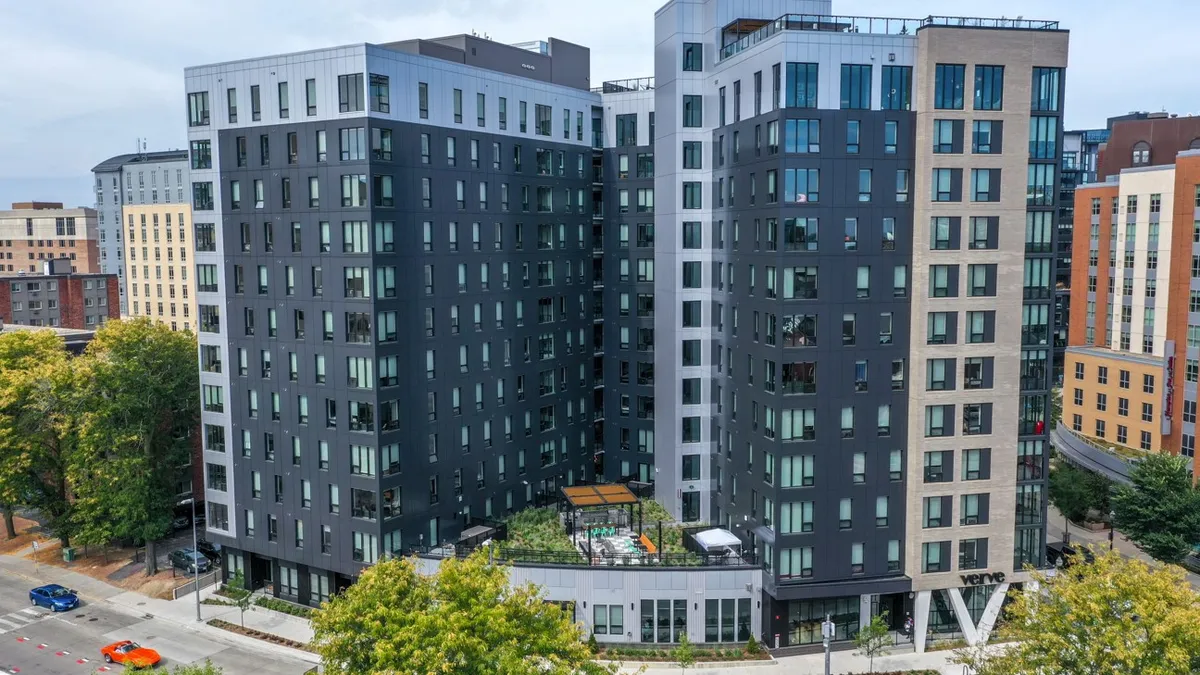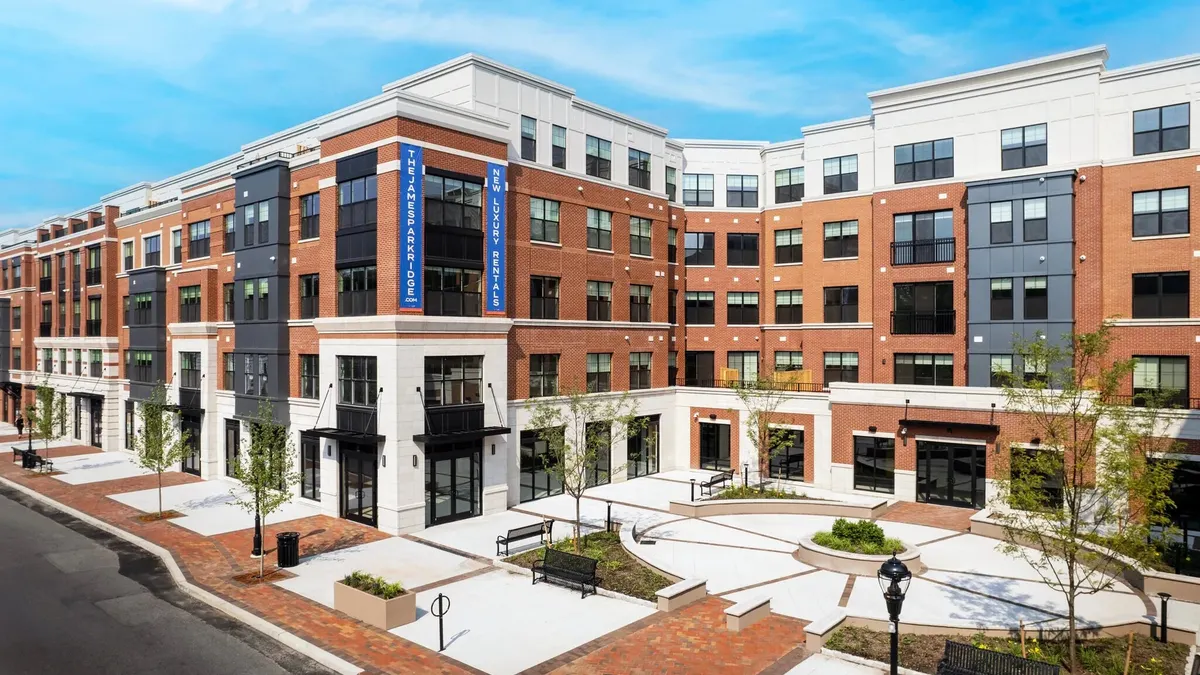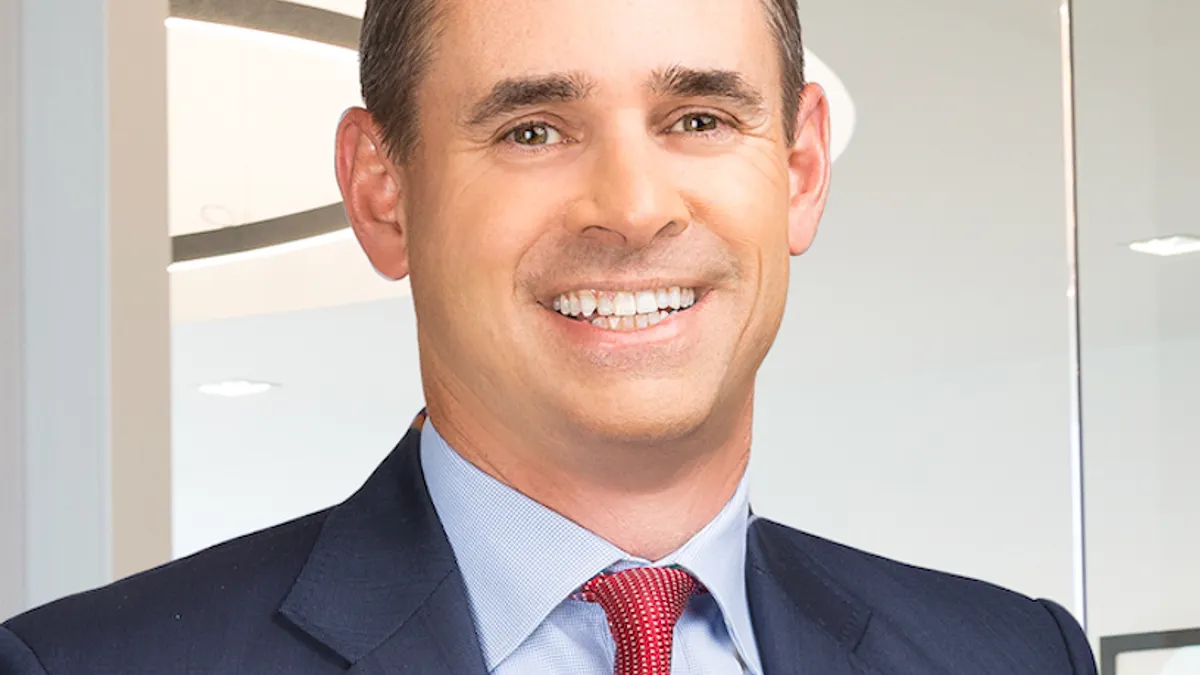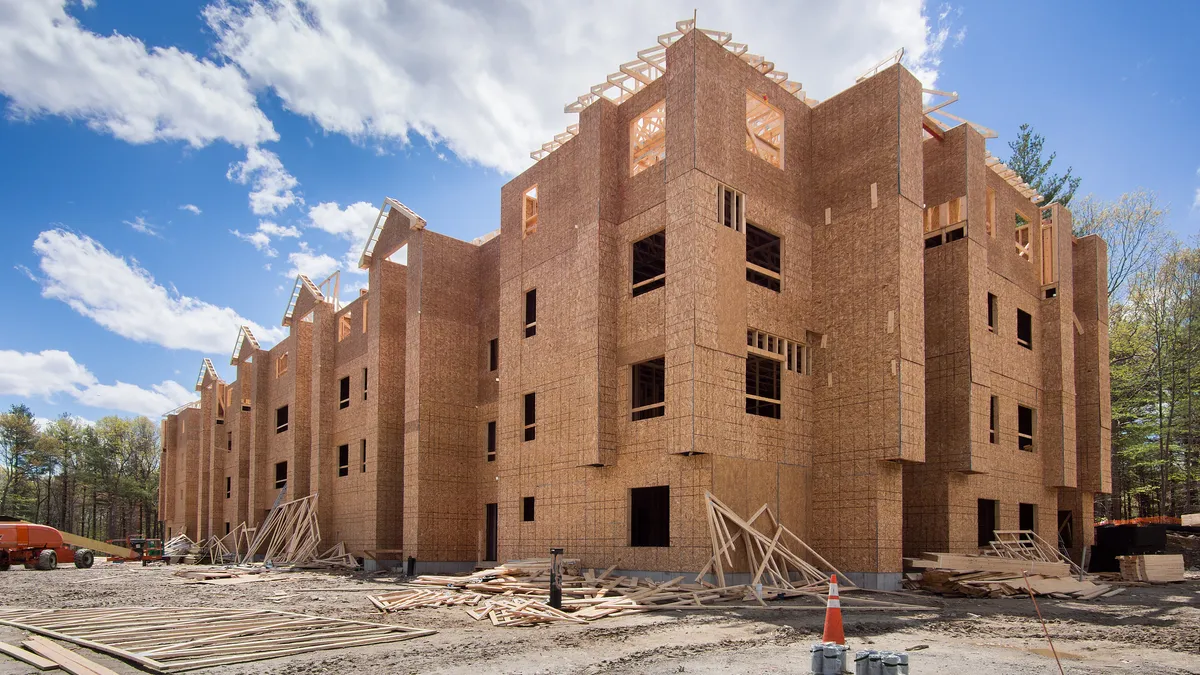Last November, Harrison Street made one of the bigger deals in student housing when it sold a 14-property student housing portfolio totaling 8,724 beds to The Scion Group and a major institutional investor, later identified as Brookfield, for $893 million.
Even after making such a large disposition, the Chicago-based alternative real estate investment management firm still has a lot of faith in the student sector. “It's a pretty stable and steady asset class, one that is not directly tied to the performance of the overall economy,” Ben Mohns, head of asset management for North America at Harrison Street, told Multifamily Dive.
Since its founding in 2005, Harrison Street has invested over $22 billion across 410 student properties totaling more than 222,000 beds throughout North America and Europe. The firm has sold 212 student housing properties for a gross value of over $8.8 billion.
“We're always monetizing assets in our opportunity funds and then looking for the optimal time to maximize returns for our investors,” Mohns said. “That was largely what we were doing in this transaction.”
Harrison Street currently owns more than 90,000 beds in North America, split between on-campus and off-campus housing. The firm recently announced new developments at Purdue University in West Lafayette, Indiana, and the University of Michigan in Ann Arbor with Austin, Texas-based developer LV Collective.
“We have high conviction in the space,” Mohns said.
Here, Mohns talks with Multifamily Dive about student housing fundamentals, target markets and competition in the sector.
This interview has been edited for brevity and clarity.
MULTIFAMILY DIVE: How is the supply-demand picture for student housing?
BEN MOHNS: We're seeing record enrollments. You have strong demand drivers. There is a value to education. When I look at the multifamily space, I'm not sure that there should be a gap in pricing with student housing. But that gap is narrowing. In multifamily, you've got that frictional vacancy that you're dealing with.
In student housing, the asset turns over once a year. But if you're in the right market, in the right location and with the right operator, you're going to be full. And that capital is going to be pretty sticky and defensible.
Do you focus on schools in the largest athletic conferences?
It's largely Power Four conferences. We identify markets with a bed-to-enrollment ratio ranging from 30% to 35% and occupancies in the high 90% range. We're focused on those markets in which the fundamentals are expected to improve over the course of the fund’s business plan and our exit timeline. So it's hard to say that we are solely into Power Fours, but that's largely where we're focused.
What are you looking for in operators of student housing?
The way that we have thought about it lately is that we want to do more with less. We have a strong operator network of a dozen-plus active operating partners. We work with the largest third-party property managers, and I think we're pretty happy with our network of operators and the ecosystem that we've built.
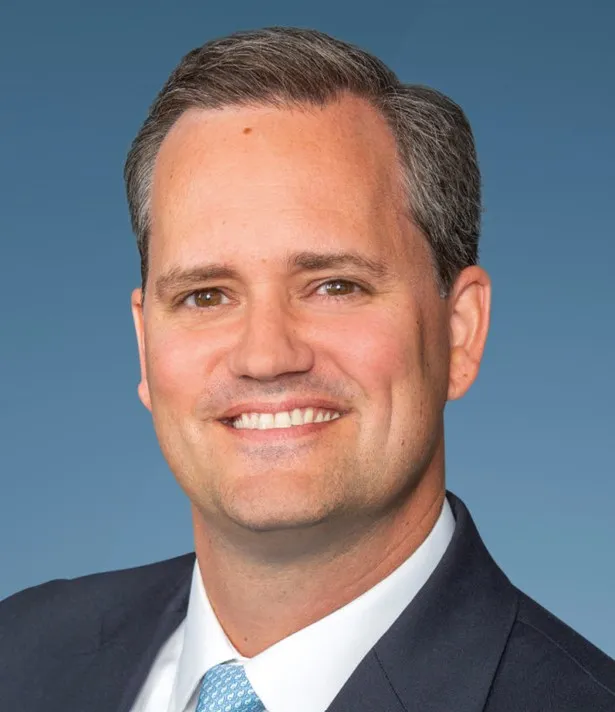
We want to do more deals with our existing partner base because, as the economy becomes challenging, there's a higher level of scrutiny on investments. We've made mistakes in the past. We've learned from them, and we're going to try to incorporate that going forward to build upon the success we have with our existing partners.
Have you seen capital migrate from multifamily to student housing?
You look at the transaction activity in the alternative sectors, and it has absolutely spiked during economic uncertainty. We're seeing that in some of the new entrants who are coming into student housing who have traditionally invested in multifamily.
The open-ended core vehicles who have traditionally invested in multifamily are seeking exposure to the alternative asset classes, and that share of transaction volume has certainly spiked during challenging economic times.
How do you mitigate development risk?
I think we've done a nice job identifying the right markets and assets, utilizing our own proprietary data across our portfolio to benchmark operating metrics and develop well-located assets in select markets with favorable enrollment outlooks and supply-demand fundamentals. That is the crux of our business.
We don't take cost overrun risk. We don't take entitlement risk. We don't guarantee or take recourse on the loans. So we are mitigating the risk associated with development. For us, on a risk-adjusted basis, I think development is very appealing on the student housing side.
Click here to sign up to receive multifamily and apartment news like this article in your inbox every weekday.



